
Siheyuan (quadrangle) is the traditional residential compound of Beijing. Taking shape in the Liao Dynasty, it matured through the Jin, Yuan, Ming and Qing Dynasties to become the most characteristic residence of Beijing.
The name siheyuan means a courtyard surrounded by houses on all the four sides. Over hundreds of years, the Beijing siheyuan formed a style unique to the capital city in layout, inner structure, furnishing and decoration.
A regular siheyuan is built in a lane (hutong) running from east to west, and faces south. The four houses, with the principal one in the north, are enclosed with high walls. The main gate is opened in the southeast corner, the position of xun in the Taoist Eight Diagrams, signifying the wind. The northern house usually has three main chambers and two flanking ones; the eastern and western houses, three chambers respectively; the southern house, four chambers. There are altogether seventeen bays if the main gate and the festooned gate are included. Assuming 11 to 12 sq. m for each bay, the total area amounts to about 200 sq. m. The courtyard is spacious, containing trees, flowers, and gold fish jars. It is the center of the siheyuan, serving for passage and providing good light, ventilation and cool shades. People would like to take a rest or do the housework here.
Despite the sameness of layout, siheyuan differs in sizes. There are large, middle and small sized siheyuan.
In a small siheyuan, the northern house has three chambers, one or two of them being the main chamber(s). The eastern and western houses have two chambers respectively, and the southern house has three chambers. The houses are built with brick, and covered with a ridged tile roof. They can be inhabited by a family of three generations, with the elderly members living in the northern house and the younger ones living in the eastern and western houses. The southern house may serve as the study or the living room. In the courtyard there are brick-paved paths leading up to the steps before the doors of the houses. The main gate has two leaves coated in black lacquer, with two brass knockers on them, and a couplet pasted on both sides.
A middle siheyuan is more spacious. The northern house has three main chambers and two flanking ones. The eastern and western houses have three chambers respectively. Before each house is a corridor serving as a shelter from wind or rain. The courtyard is partitioned by a wall into a front (outer) yard and a back (inner) yard, with a moon-shaped gate in the wall. The front yard is simple, with one or two gate houses. The back yard, the living quarters, has well built houses with square-brick-paved floors and granite steps.
A large siheyuan is customarily known as “big mansion” (dazhaimen). The southern house may have five or seven chambers, and so does the northern one. The principal house may have as many as nine or eleven chambers. It is usually made up of several quadrangles connected lengthways. There are many courtyards, such as the front yard, the back yard, the eastern yard, the western yard, the principal yard, the flanking yards, the side yards, the study yard, the stable yard, the first row of courtyard, the second row, and the third row. The various parts of the compound are connected by corridors. The area covered is enormous. However, if the space available is inadequate, of if a full-size large siheyuan is not affordable, the southern house may be omitted.
The middle or small siheyuan was usually inhabited by ordinary people, while the large siheyuan served as the mansion of a senior official or government office.
The houses in the Beijing siheyuan are built with wood and bricks. The frameworks–purlins, columns, beams, thresholds, rafters, doors, windows, and partitions—are made of wood. The beams, columns, doors, windows and the ends of rafters are lacquered or decorated with colored paintings, holding their own against magnificent palace halls to some extent. The walls are customarily built with polished bricks and broken bricks. The roofs may be tiled, with drip-tiles below the eaves; they may also be simply covered with graphite, with no tiles at all.
The main gate usually occupies the space of a chamber. It has a complicated structure, composed of over twenty types of components, such as frames, leaves, thresholds, bolts, nails and hinges.
The main gate is usually coated in black lacquer, and may be decorated with a couplet with black characters on a red background. Behind the main gate are the festooned gate and the moon-shaped gate. The festooned gate is the most beautifully decorated of all the gates, with eaves modeled on the top of the pailou (decorated archway). It serves to divide the courtyard into two parts——an outer part consisting of the living room, the gate house, the carriage house and the stable, and an inner part, or the living quarters. The moon-shaped gate may also serve the same function if there is no festooned gate.
The festooned gate is beautifully lacquered. The ends of rafts under the eaves are in bluish green, and the wangmu in red; the round raft ends are decorated with a pattern of concentric blue, white and black circles, and the square raft ends, with golden patterns or diamond designs. The middle of the front eaves also has decorative designs. The lotus-shaped ends of the columns on both sides, with patterns carved on them, are colorfully lacquered.
The carved patterns in the siheyuan are symbols of good luck, such as the combination of the character meaning longevity and the bat (meaning happiness), the vase with a Chinese rose in it (meaning “peace in four seasons”), and tokens of “long-lasting clan”, “three friends in winter”, “riches and honor”, and “happiness, wealth and longevity”. They reflect old Beijing dwellers' wish for a happy life.
Trees and flowers are planted in the siheyuan to add to its beauty. Traditionally planted are such flowers as lilacs, Chinese crabapples, flowering almonds and mountain peaches, and such trees as jujube and locust. Flowers may also be grown in flowerpots or in water.
Plants grown in flowerpots are usually pomegranate trees, oleanders, cassiabark trees, osmanthus fragans, Indian azaleas, and gardenias. Pomegranate trees are symbolic of fertility. In flowerbeds before the steps of houses are usually planted jasmines, garden balsams, morning glories, and hyacinth bean flowers.
Life in a siheyuan is described in a Qing-dynasty saying :“awning, fish jars, and pomegranate trees; master, fat dog, and plump maidservant.”
Though it is usually inhabited by one household, a siheyuan may also be shared by several poor households. In the case it would be called a dazayuan, of which many old Beijing dwellers cherish fond memories.







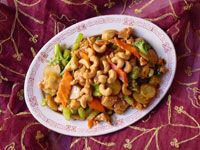
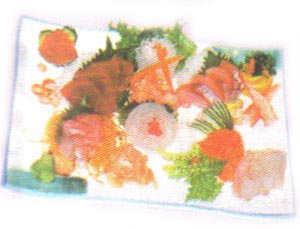
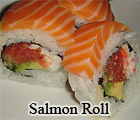

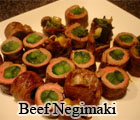

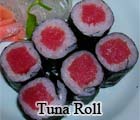

 PREVIOUS
PREVIOUS